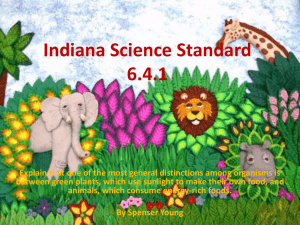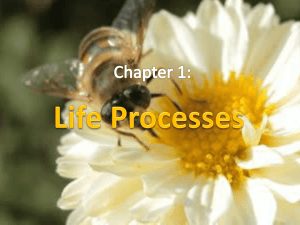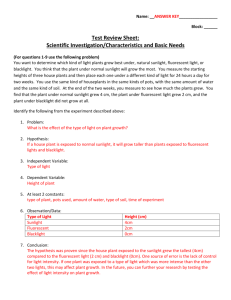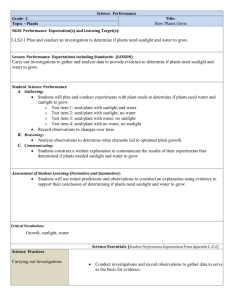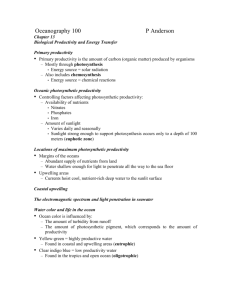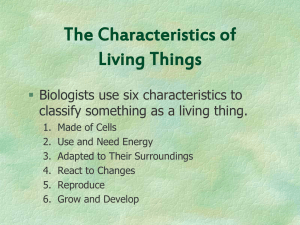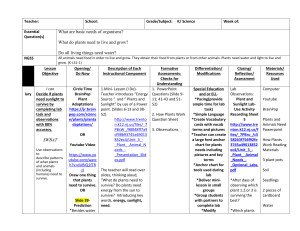Lesson 3: The Needs of Living Things
advertisement
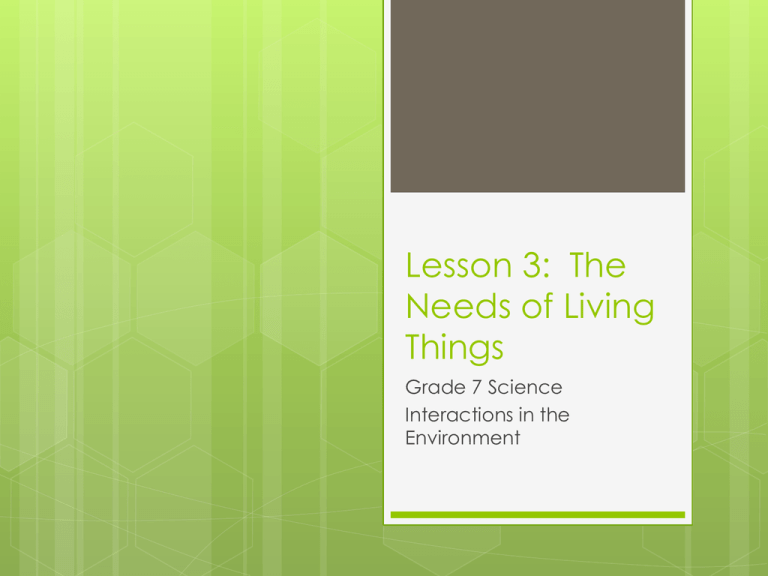
Lesson 3: The Needs of Living Things Grade 7 Science Interactions in the Environment The Needs of Living Things Learning Identify biotic and abiotic elements in an ecosystem. Success Goals: Criteria: I can name the basic needs of all living things and why organisms need these factors. I can explain the importance of sunlight for both plants and animals. The Needs of Living Things The physical space where an organism lives is called its habitat. An organism can only live in a habitat where its basic needs are met. All living things need 5 basic needs for life: Sunlight Air Water Food Ideal temperature 5 Basic Needs for Life 1. Sunlight: Sun provides the energy that makes plants and animals grow and reproduce. Plants use sunlight to make their own food (sugars). The amount of sunlight an area receives determines what is able to live there (e.g. dandelions like sun, while ferns like shade). Animals get their energy indirectly from the sun when they consume plants. Hours of sunlight varies with seasons triggering flowering and migration. 5 Basic Needs for Life 2. Air Air is made up of many gases, including oxygen (O2), carbon dioxide (CO2) and nitrogen. Humans and many animals need oxygen to live. Plants absorb CO2 from the air to produce sugars (food energy). They also release oxygen during this process. Without this process (photosynthesis) we would not have enough oxygen! 5 Basic Needs for Life 3. Water ALL organisms need water. Animals need water to digest food and form body fluids, such as blood, that distribute nutrients through the body. Plants need water to grow and produce their food. Some plants and animals live in water. Water also contains oxygen and CO2. 5 Basic Needs for Life 4. Food Food provides organisms with nutrients. Nutrient: o o o a substance that an organisms needs to grow and maintain its body. Nutrients include sugars and starches, fats, proteins, vitamins and minerals (such as phosphates and nitrogen). Plants that live on land absorb nutrients from the soil and surrounding environment. Animals obtain nutrients from the food they eat as well as the environment. 5 Basic Needs for Life 5. Ideal Temperature Range Temperature is affected by the interactions of sunlight, soil, air and water Temperatures on Earth can range from -88 degrees Celsius to 50 degrees Celsius. Most organisms have an ideal temperature range in which they can live (think of buying plants). For example, brook trout prefer water temps between 4 and 20 degrees C and will only lay eggs when the water temp is below 13 degrees. Check your learning and your notes… List the 5 basic needs of all living things and why organisms need each of these factors to survive. Explain why sunlight is a basic need for both plants and animals. Describe the different ways that different organisms use water to survive. Name two ways plants affect human survival.

